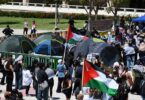KHAWAJA WAJIHUDDIN
According to the last census issued issued by the government of Pakistan, Children below the age of 15 represented were 40.7% of our population in 2017. According to the same censues, 10. 37%comprised children between is the population between 15 to 19 years of age. Those figures indicate that children stand for This roughly means more than 50% of our total population.
In my 32 years long judicial career, I came across many incidents which had a long-term impact on my thought process. Some left me in anguish, others had me beleaguered. One such incident needs to be mentioned here. A child became a complainant in a sodomy case. Compromise was alleged and the complainant was called to the court. The complainant was a slim and frail small boy of 8/9 years obviously impoverished, very shabbily dressed and undernourished. I asked him questions about the genuineness of the compromise and the circumstances leading to it. The boy stated clearly stated that he earned livelihood with great difficulty through a donkey cart, being the eldest. Neither he nor his siblings attended school as they could not afford it. He had to choose between earning a living and litigationin the court. He said he was helpless and was in tears. This incident always pricked my mind. My desire to do something saw the daylight with my posting as Registrar of the Peshawar High Court.
“The United Nations Universal Declaration of Human Rights, the United Nations has proclaimed that childhood is entitled to special care and assistance. The Need to extend particular care to the child has been stated in the Geneva Declaration of the Rights of the Child of 1924 and in the Declaration of the Rights of the Child adopted by the General Assembly on 20 November 1959 and recognized in the Universal Declaration of Human Rights, in the International Covenant on Civil and Political Rights (in particular in articles 23 and 24), in the International Covenant on Economic, Social and Cultural Rights (in particular in article 10).”.The nelson Mandela rules provide additional guidelines on justice with children.
Pakistan has signed and ratified the United Nations Convention on the Rights of Child and is hence bound to take measures accordingly.
Considering those International commitments, legalities, ground realities and research led us to the conclusion that the answer was in the constitution, and decision of the NJPMC (Notational Judicial Policy Making Committee) dated 24/6/2019and law of the land. Detailed deliberations and analysis by our team concluded that merging the rights of the child to protection broadly with the child welfare mandate severely diluted the former. The Child Protection Unit (CPU) assessment report of for 2013 reveals that 95% of the cases received were welfare oriented and 5% were protection related. The assessment lead to the finding that a conceptual distinction between child protection and child welfare is required to ensure a better enforcement of the strengthened realization of the rights of the children’s right to protection and dignity in the country. The most unfortunate and tragic incidents reported were cases of children pornography, children trafficking and inciting child to bet or borrow which required immediate attention and called needed for the establishment of Children Protection Courts.
In the devolved context, each Provincial Government in Pakistan is obliged to ensure that children are protected from all forms of abuse, i.e. violence, exploitation and neglect. In pursuance of this obligation, the province of Khyber Pakhtunkhwa promulgated the “Child Protection & Welfare Act 2010″. The statute provides for the articulation of specific criteria in support of the identification of children requiring protection in the province and the establishment of an administrative structure to ensure the delivery of the child protection mandate. The Act also provides the establishment of Children Protection Court u/s 15(2.
As per the ibid statutory requirements and as per Section-4 of the Juvenile Justice System Act 2018, and the recently enacted anti-rape (investigation and trial) Act 2021, it became imperative to have exclusive Child Protection Courts dealing with all the affairs of children.
In fact, tThe legal mandate of the Child Courts envisaged in KP isa comprehensive one as it concerns children in conflict (accused) and in contact with the law with the law (victims)is wider than a Juvenile Court, even it compasses the Cases where minors are involved from the prosecution side as well and in that Capacity it acts as a Child Court if the accused is not a Juvenile. It acts as Juvenile Court where the accused is a child in other cases involving minor it acts as a Chil: under one roof, child courts consequently hold several special jurisdictions as a child protection court, a juvenile court and an anti-rape court.
Protection Court..The Khyber Pakhtunkhwa Child Protection and Welfare Act, 2010 is all encompassing and inter-alia appropriately defines “child at risk”.
The establishment of child courts relies on the theory that children are characterized by specificities and vulnerabilities that make them different from adults., To and in order to ensure that they access justice, it is essential important to provide minors them with a justice process that which abides by the internationally recognized principles to avoid secondary trauma and victimization..
The basic concept of child courts was as follows:-
• To provide an exclusive forum for the children in at conflict with law or seeking the help of law to enforce their rights, and disposal of children cases on priority;,
• Provision of safe and secured atmosphere to provide confidence to the children,
• Frequent and repeated follow up counseling by the Child Court to explore possibilities of reformation and reintegration of children in conflict with the law into the society as a healthy, responsible and law-abiding citizen normal human being.
• Ensure the Provision of beautification of court rooms with paintings on the walls, colors inside and outside the court rooms which could provide a conducive genial atmosphere to the children in attendance;.
• Segregation of children from adult accused desperate and harden criminal and to keep them away from all sorts of harm harassment in offences of heinous nature.
• A team of specialized, trained and mentored judges, prosecutors and police officers in and around the child courts to dispense justice with children.
• A unique aspect of this child court concept has been the applied child participatory approach to guarantee the relevance and efficiency of the courts: they were involved in the training of judges, in the selection of the court premises, in their design and launch. Unique fact was association of children at the conceptual level and its launching. This was a very peculiar experience from which we learned a lot. Children understand child rights and can provide valuable suggestions to enforce those. .
• Above all to ensure that the conditionality’s of international commitments, constitution of our country and the law were fulfilled.
In this connection the Hon’ble Administration Committee of Peshawar High Court in its meeting held on 26-01-2019 approved the establishment of Child Protection Courts as a Pilot Project in at Peshawar instantly followed by the establishment of Child Courts in the Divisional Head Quarters and ultimately in all the districts of Khyber Pakhtunkhwa. In order to achieve the desired results, training sessions were arranged by the KP Judicial Academy and the Group Development of Pakistan. The trainees were not only judicial officers but also all the key stakeholders involved in the justice sector.
In the first phase, at the Child Court was established in the Provincial Capital (Peshawar). The basic facilities and paraphernalia were provided by the British High Commission and Group Development of Pakistan. A French philanthropist, national Gilles Blanchard, of “Zzamzana” company contributed to the establishment of a child court in at Mohmand, the erstwhile FATAs agency. It was a historic achievement indeed to foster formal gender and child justice. A dedicated judge was assigned to the court. The exclusive working days for the Child Protection Court were determined on the basis of data received from District Courts. In the second Phase, the establishment of the Child Court was extended to the Divisional
‘Head Quarters on the pattern of the CPC Peshawar. These were inaugurated by late Chief Justice, Honorable Mr. Justice Waqar Ahmed Sseth and the present incumbent Honorable Mr. justice Qaiser Rashid khan Chief Justice of the Peshawar High court. By the grace of the Almighty, Khyber Pakhtunkwa Peshawar High Court is the only province high court with the highest number of which has eight child courts- eight to date-. . It includes a child court in the erstwhile FATAs agency now district” Mohmand”. It was a historic achievement indeed.
The child courts created in a ray of hope in opening new horizons for effective delivery of juvenile justice and child protection. Regular third party assessment of all child courts in Pakistan showed that child courts are working quite efficiently doing not bad a job. The last assessment available shows that the case disposal rate of child courtsin of Khyber Paktuoonkhawa was 90 % in Bannu,84% in Mohmand,79% in Ppeshawaer,68% in Aabbotabad,68 % in Mmardan,65% in Dera Ismail khan,59% and 50 % in Swat and Kohat respectively. The child court in at Karachi Malir was at 33% Karachi east was 80 % while Lahore was 29 % and Quetta at 14 %; , while65% was the rate at the national level. Child court at Islamabad was 100 %.The national average time to dispose of a case by the child courts was of 184 days..
“On average, cases remained active for 120 days in the pilot child courts, at the National level. In Peshawar pilot child court, cases remained active for 149 days on average. In Mardan pilot child court, so far, cases have remained active for 94 days on average. In Abbotatabad pilot child court, cases are active for 103 days on average. In Mohmand pilot child court, cases are active for 72 days on average. In Kohat pilot child court, cases remained active for 115 days on average. In Derra Ismail Khan pilot child court, so far, cases have remained active for 338 days on average. In Bannu pilot child court, cases were active for 183 days on average. In Swat pilot child court, cases were active for 106 days on average. In Lahore pilot child court, cases were active for 98 days on average. In Quetta pilot child court, cases were active for 41 days on average. In Karachi East pilot child court, cases are active for 93 days on average. In Karachi Malir pilot child court, cases were active for 260 days on average.”
The national average bail-out rate was 106% with Dera Ismail Khan, Kohat and Peshawar pilot child courts recording the bail-out of 220%, 217% and 206% respectively. .
The said report further shows that the Number of cases involving children in conflict or in contact with the law tried under the pilot child courts remained at 2,447 Total, .83% of which were male and 17% female. Numbers of children accessing justice services through the pilot child courts were 3,292. Total 76% male and 24 % female. While Number of children appearing as witness in the pilot child courts were 1,204 Total 71% male and 29%female. Children in conflict with the law tried in the pilot child courts were 1,183 Total 97% of which were males and 3 % females. Number of accused children granted bail by the pilot child courts was1,234 Total 97% 3%.Number of accused children acquitted/released were 255 Total 98% male and 2% female .Number of child victims appearing in the pilot child courts was 905 out of which 75% were male and 25% female .Total Number of children availing diversion was 661 of which are males were 55% and 45% females. Number of Accused Children Convicted with Minimum Punishment in line with JJSA was 68. While Number of adults convicted in cases of child abuse was 23.
As far as Khyber Paktoonkhawa is concerned simultaneously efforts for TORs in pursuance of Section 10 of Juvenile Justice System Act-2018.were initiated. A technical committees was established..It is an outcome of the KP judiciary efforts and initiative to improve juvenile justice in the province, and thereby, rule of law in
the country.
The child courts provided a physical, human and emotional environment which served those four fundamental principles:-
• Physical space: the structure is not frightening, it is colorful, the child can relax, sleep, play, read, color, etc; a video link system is put in place and the child victim or accused can be interviewed without having to physically face the abusers or adult co-accused in another room; the child can sit next to the judge at the same level to share his/her story;
• Human child and gender sensitive environment:; the justice actors, are trained: presiding officers, lawyers, prosecutors, and police officers/security staff are trained. There is age and culture appropriate questioning, no secondary victimization. The child is guided through the various phases of what he or she is going to experience and then she/he can also take a break if/when needed. Media and people not concerned with the case are not allowed inside.
• The psychological environment evolves around calm, dignified humane vision of justice where the best interest of the child must prevail at all times. These arrangements make the child comfortable enough to share his/her best EVIDENCE, a critical element to dispense justice.
Another argument is the economic one: by using one structure, one team for multiple jurisdictions (JJSA, KPCPWA, anti-rape-act 2021), and one set of equipment with the same expertise; we ensure quality of justice for multiple cases and generate Value for Money (no need to multiply the teams).
Finally, the social argument: child courts have proven to satisfy their users greatly (around 80% satisfaction rate expressed by clients in KP).This satisfaction generates an increased trust in the justice system, which will help build rule of law and social cohesion and eventually peace.
Overall, by ensuring justice to child victims, reformative action for child convicts, we are contributing to protecting children from further harm and thereby are helping stop the intergenerational cycle of violence. Justice with children is an integral part of a healing process for children who faced the worst;, without this healing process, children are at a much higher risk of becoming abused adults of adult abusers/criminals, due to ill-addressed trauma.
The child courts which have been successfully piloted in KP have enabled a pool of specialized justice actors to transform the criminal justice system and make it a part of a transformative process for justice and peace. Those courts are more than a symbol, they are a sanctuary for hundreds of children & sometimes their family (their guardians, custodians) who feel heard, acknowledged, protected and respected. Those child courts stand for the testimony of the state’s will to challenge a status quo and invest into its human capital to foster positive citizenry. Surely our little ones deserve this attention…one of the young children present during the inauguration of the child court in Abboatabad stated “now we know that you are here for us”. Let us honor this trust, let us never let these children down and realize that their hope must not be betrayed.
GDP The, GDP,(group development of Pakistan ) made a documentary on Child Court, Peshawar, to present an example of good practice to promote justice for children in KP, for airingthe same in 2019 Asia Partnership Meeting of Child Rights Coalitions and Networks inatBangkok. Reportedly it helped immensely in improving the image of our beloved country. The documentary is available on YouTube under the title, “we have a dream”.
My dream became true partially with the establishment of eight childcourtsprotection by the Peshawar High court. In the last phase, these courts will become part of each and everydistrict. It is hoped that relevant quarters of the government would help in the completion of the last phase.
kwajihuddin@hotmail.com
The writer is the ex registrar of the Peshawar high court






